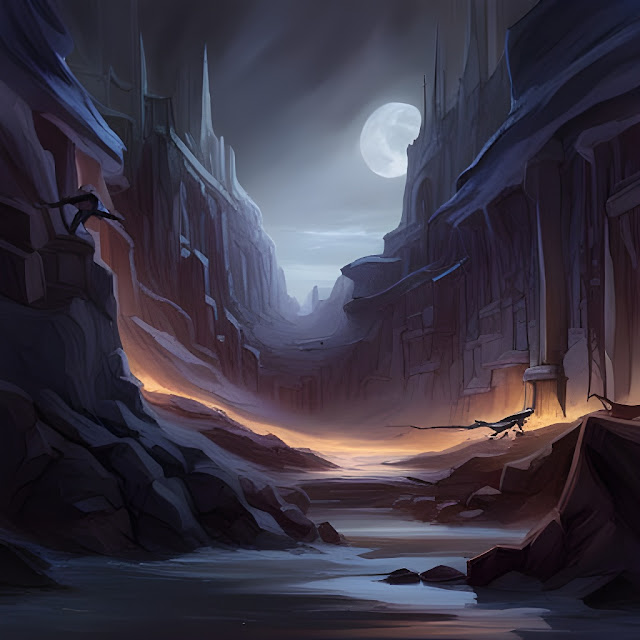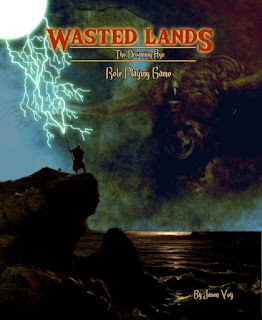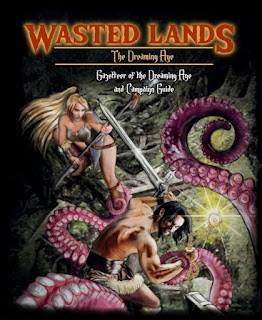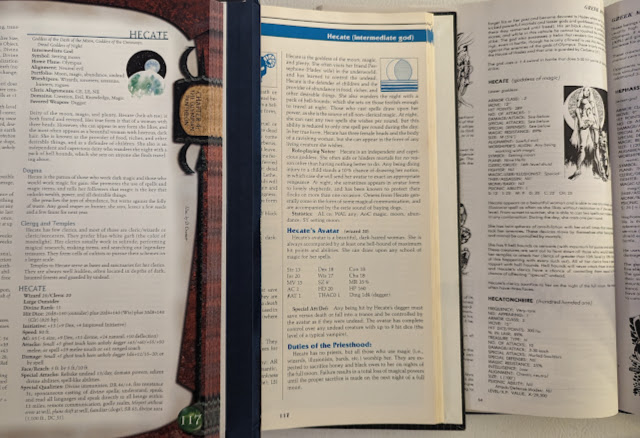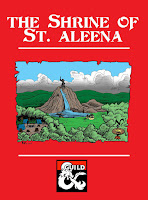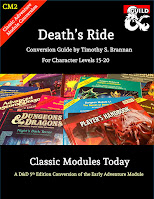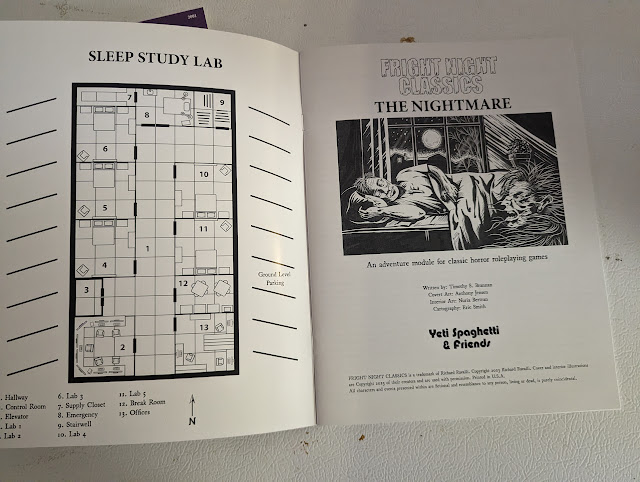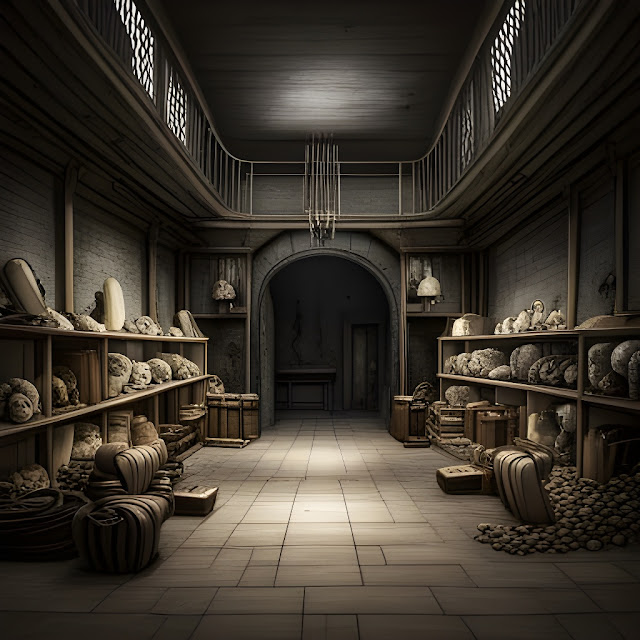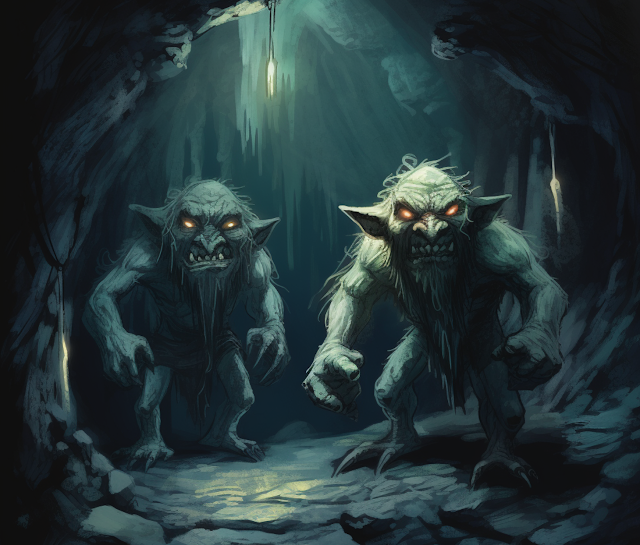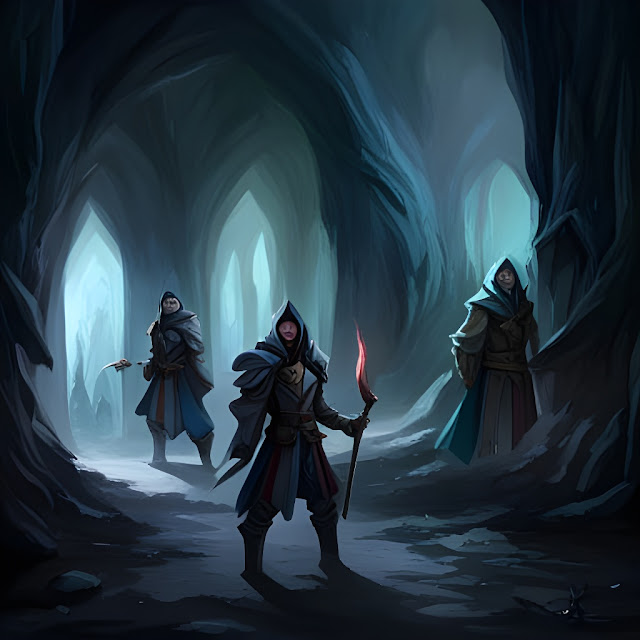Further Beyond Failure
 Further Beyond Core Rules Preview is the introduction to Further Beyond: The Roleplaying Game of Galactic Exploration & Adventure. Published by Blue Donut Games, it takes its inspiration from the artwork of Peter Elson, whose work graced the covers of numerous fantasy and Science Fiction novels during the seventies, eighties, and nineties. It has a distinctly seventies feel to its look and its style, depicting a future of strange worlds, aliens, rocketships and other giant spaceships, and of heroic men and women. Its nearest antecedent is Traveller, one which the authors admit to having had run in the past. The Further Beyond Core Rules Preview provides an introduction to the core ideas behind Further Beyond: The Roleplaying Game of Galactic Exploration & Adventure, its key rules, combat rules, how to run the game, and a short bestiary. However, what the Further Beyond Core Rules Preview lacks are details of what a Player Character or NPC looks like or anything specific that they could play. This limits the scope of the preview, unfortunately.
Further Beyond Core Rules Preview is the introduction to Further Beyond: The Roleplaying Game of Galactic Exploration & Adventure. Published by Blue Donut Games, it takes its inspiration from the artwork of Peter Elson, whose work graced the covers of numerous fantasy and Science Fiction novels during the seventies, eighties, and nineties. It has a distinctly seventies feel to its look and its style, depicting a future of strange worlds, aliens, rocketships and other giant spaceships, and of heroic men and women. Its nearest antecedent is Traveller, one which the authors admit to having had run in the past. The Further Beyond Core Rules Preview provides an introduction to the core ideas behind Further Beyond: The Roleplaying Game of Galactic Exploration & Adventure, its key rules, combat rules, how to run the game, and a short bestiary. However, what the Further Beyond Core Rules Preview lacks are details of what a Player Character or NPC looks like or anything specific that they could play. This limits the scope of the preview, unfortunately. In Further Beyond: The Roleplaying Game of Galactic Exploration & Adventure, the players make all of the rolls. Thus, it is a player-facing roleplaying game. It uses a twenty-sided die for its core mechanic. A Player Character has four stats—Physique, Dexterity, Intellect, and Affinity—and these serve as bonuses to Saves, or saving throws. The core mechanic consists of rolling the die and attempting to equal or exceed a Difficulty Target Number, which ranges from four for Routine and eight for Basic to thirty-six for Legendary and forty for Impossible. It is possible to roll a partial success as well as success. A success is equal to or greater than the Difficulty Target Number, whereas a partial success is a roll between the Difficulty Target Number and four lower than the Difficulty Target Number. It indicates a successful action, but carried out with some consequence. A failure is thus a roll between five less than the Difficulty Target Number and a result of two. A roll of one is a critical failure, whilst a roll of twenty is a critical success. There are consequences to rolling a failure, which will be worse if a critical failure or not so bad if a partial success. The Custodian—the term for the Game Master in Further Beyond—suggests what these consequences might be. The system uses the standard rules for advantage and disadvantage, but a player never rolls more than two twenty-sided dice, whether he has advantage or disadvantage.
Combat in Further Beyond uses the same mechanics bar a tweak or two. Of course, a player will be rolling for his character to make an attack, but also rolling to avoid an attack against his character, since the mechanics to Further Beyond are player-facing. The first tweak is that there are not necessarily any consequences to failing an attack roll, which a critical success will typically inflict double damage. Damage reduces a Player Character’s Hit Points and when they are reduced to zero, they are reset to their maximum minus any excess damage which carried over the zero, and the Player Character suffers a wound. A Player Character who three or more wounds left suffers no ill effects, but saving throws against his stats are required if the number of wounds is lower, and at zero wounds, the Player Character is dying. The guide to combat covers the typical range of actions a Player Character can do, including reactions such as Opportunity Attack or Brace.
Further Beyond Core Rules Preview also covers vehicles, but not spaceships, and then only briefly. Advanced vehicles are semi-autonomous, so in combat, a vehicle can follow instructions given to its by its pilot, who can also act as well. There is also some discussion of the types of environments that the Player Characters might face before a discussion of the structure of play in Further Beyond. This divides play into missions and downtime, with options for the latter including studying a specific skill, gathering information, or making or using a contact. This is followed by advice for the Custodian, first on running the game and then on combat. Rounding out the Further Beyond Core Rules Preview is a selection of ‘Creatures of the Vast’, such as the Chameleon Broodmother which hunts in caves and is intelligent enough to cultivate environments for the herbivores it feeds on or the ‘Night Eagle’, a predator which shocks its prey with its fire breath before swopping down and grabbing them. Over the course of the next ten pages, some sixteen or so ‘Creatures of the Vast’, including mundane Earth creatures such as the wolf and the elephant. Lastly, there is a player character sheet for Further Beyond: The Roleplaying Game of Galactic Exploration & Adventure.
The Further Beyond Core Rules Preview is the first part of Further Beyond: The Roleplaying Game of Galactic Exploration & Adventure, which is designed to do two things. One is to serve as the first part of an ongoing subscription for Further Beyond: The Roleplaying Game of Galactic Exploration & Adventure, and the other is provide a test bed for the rules in the lead up to a full version of the roleplaying game. Unfortunately, the Further Beyond Core Rules Preview does not succeed at either. Although the Further Beyond Core Rules Preview provides a decent preview of the rules and combat, how the game is intended to be played, and the types of ‘Creatures of the Vast’ that the Player Characters might encounter, it completely lacks any kind of preview of what a Player Character looks like, what the Vast is like as a setting, and what sort of spaceships might be found in the Vast and how they work. Then as a potential test bed for the rules, the Further Beyond Core Rules Preview does not give for the Custodian or her players anything to do. There is no mission or encounter to play out and thus no scope for feedback to the designers.
Instead of all that, there are sixteen ‘Creatures of the Vast’ over ten pages—one fifth of the Further Beyond Core Rules Preview. It is simply too many and they do not provide the reader, let alone the potential Custodian, with any useful information. In their place, there should have been four pre-generated Player Characters, ready to play, a simple scenario, such as investigating the caves on Aventis II which are home to the Chameleon Broodmother, perhaps where a previous exploration team has been reported on a previous mission. This would have at least left room for descriptions of the Vast and possibly spaceships, but above all, provided something that the Custodian and her players could have done with the Further Beyond Core Rules Preview and potentially enjoyed, and thus given constructive feedback to the designers. Of course, this would have pushed the Further Beyond Core Rules Preview towards being a quick-start, but a quick-start that would have done everything that the designers wanted for the Further Beyond Core Rules Preview.
Physically, the Further Beyond Core Rules Preview is a lovely looking magazine-style booklet. It is well written and of course, Peter Elson’s artwork is excellent.
The Further Beyond Core Rules Preview simply does not preview enough, or at least the key points, of Further Beyond: The Roleplaying Game of Galactic Exploration & Adventure. There are snapshots of a sold Science Fiction roleplaying game in its pages, but its focus on the ‘Creatures of the Vast’ to the detriment of any sense of setting or anything playable or useable makes the Further Beyond Core Rules Preview of little use to either the publisher or the purchaser.

